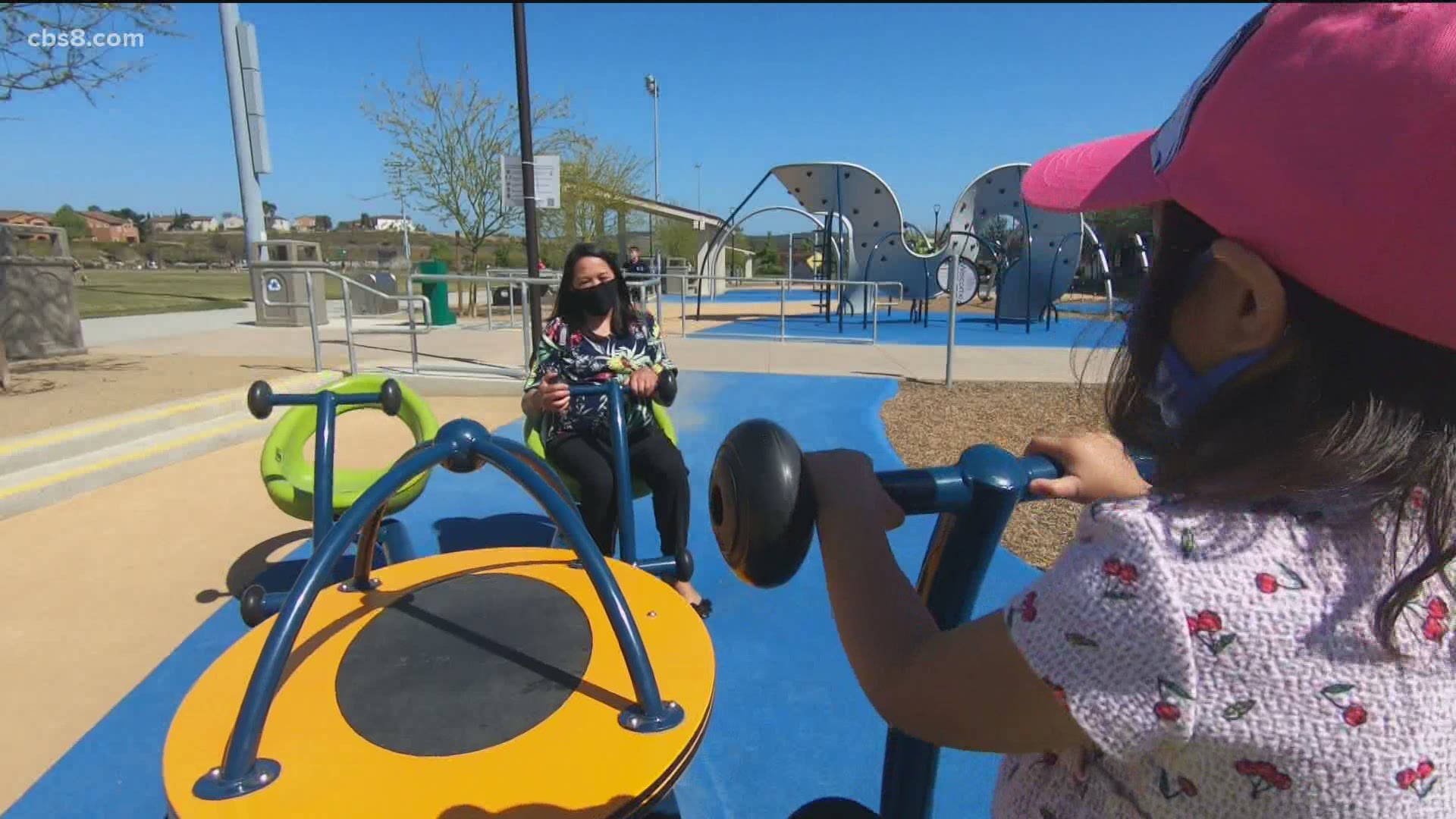SAN DIEGO — The cost of childcare has always been a struggle for working families everywhere. Now, more than a year into the pandemic, advocates say the industry is facing an unprecedented crisis which California lawmakers are racing to fix.
Across the state, the permanent closures of thousands of daycares are hiking up the costs of school and in-home child care and the ripple effect is proving to be a major setback for working women everywhere.
Judith Jamir loves being a stay-at-home mom to her 3-year-old daughter, Pia. But often finds herself searching for work that’ll pay her enough to cover the cost of preschool.
“I do miss working,” she said.
It was just before the pandemic when Jamir moved to San Diego from the Philippines for her husband’s job. She planned to get right back into her marketing career when she learned what it would cost to send Pia to daycare.
“The monthly rate here is like the annual fee in the Philippines,” she said.
California already ranks the third least affordable state in the nation for childcare.
It costs $15,000 a year on average to send an infant to a licensed childcare center according to the Cal Budget Center. That’s the equivalent of college tuition.
Now add COVID-19 to the equation.
In just over a year since the start of the pandemic- at least 8,500 California childcare centers have permanently closed. Not only are spots now limited. tuition is up to cover COVID-related expenses.
A new report from Lending Tree and center for American Progress and Child Care Aware of America says the cost of center-based child care has spiked 41% nationwide during the pandemic. And it’s sending demand for in-home care through the roof.
“There is such a shortage of care providers,” said Stacie Steelman, the CEO and Founder of Crunch Care, a national nanny staffing company based in San Diego.
Steelman said a nanny is about 35% more expensive now compared to pre-pandemic levels.
“It’s outrageous... how can a working parent pay $40 an hour for a nanny?” she said.
Steelman believes that economic relief aid may be compounding the problem. Caregivers still receiving unemployment benefits aren’t returning to work, making it that much harder for working moms to go back.
The latest reports from the Bipartisan Policy Center show 42% of women with children under 2 have left in the last year - a quarter of which did so because of caregiving responsibilities due to the pandemic.
“We’re seeing moms that have unbelievable careers that have made such advancement in the workforce… have to leave,” Steelman said.
Steelman is even seeing the impact on some of her own clients, Fortune 500 company employees such as Bank of America and Apple, choosing to leave the workforce.
“It’s not worth the tradeoff right? You’re paying $85,000 a year to hire somebody to take care of your children in home. You’d have to be making 3 or $400,000 a year to support it being truly worth going back,” she said.
For families across all income levels, California lawmakers say there couldn’t be a better time to overhaul the system.
“COVID upended this system,” said State Assemblywoman Buffy Wicks (D-Oakland).
At the heart of the pandemic, Assemblywoman Wicks made a viral statement about the struggle, showing up to the assembly floor with her weeks-old baby Elly in her arms. pushing for among other things, childcare reform.
She had requested to vote for the upcoming bills remotely. but was declined because maternity leave does not qualify.
“I had no idea that it would turn into this big thing,” she said.
The experience resonated with so many moms, it inspired new legislation aiming to give parents more flexibility when unexpected needs come up.
But reasonable accommodations are just one approach.
The state legislature is working on increasing funding for early childcare slots as well as Univeral T-K. Lawmakers are counting on President Biden’s relief bill to make it happen. The Golden State stands to receive close to $4 billion in federal aid to help low-income families pay for child care.
“I think the momentum is on our side,” said Mary Ignatius, an advocate at Parent Voices.
Ignatius helps working parents across the state apply for subsidized care. But the process is full of red tape.
“It’s a bipartisan issue… I don't know what the argument is against increasing and investing in the child care system,” she said.
And as relief measures work their way through the system, Jamir is holding off on work for a while, to refocus her energy on baby number two.
“You just have to really enjoy and experience motherhood,” she said.
WATCH RELATED: Here's how much it costs to have a baby

